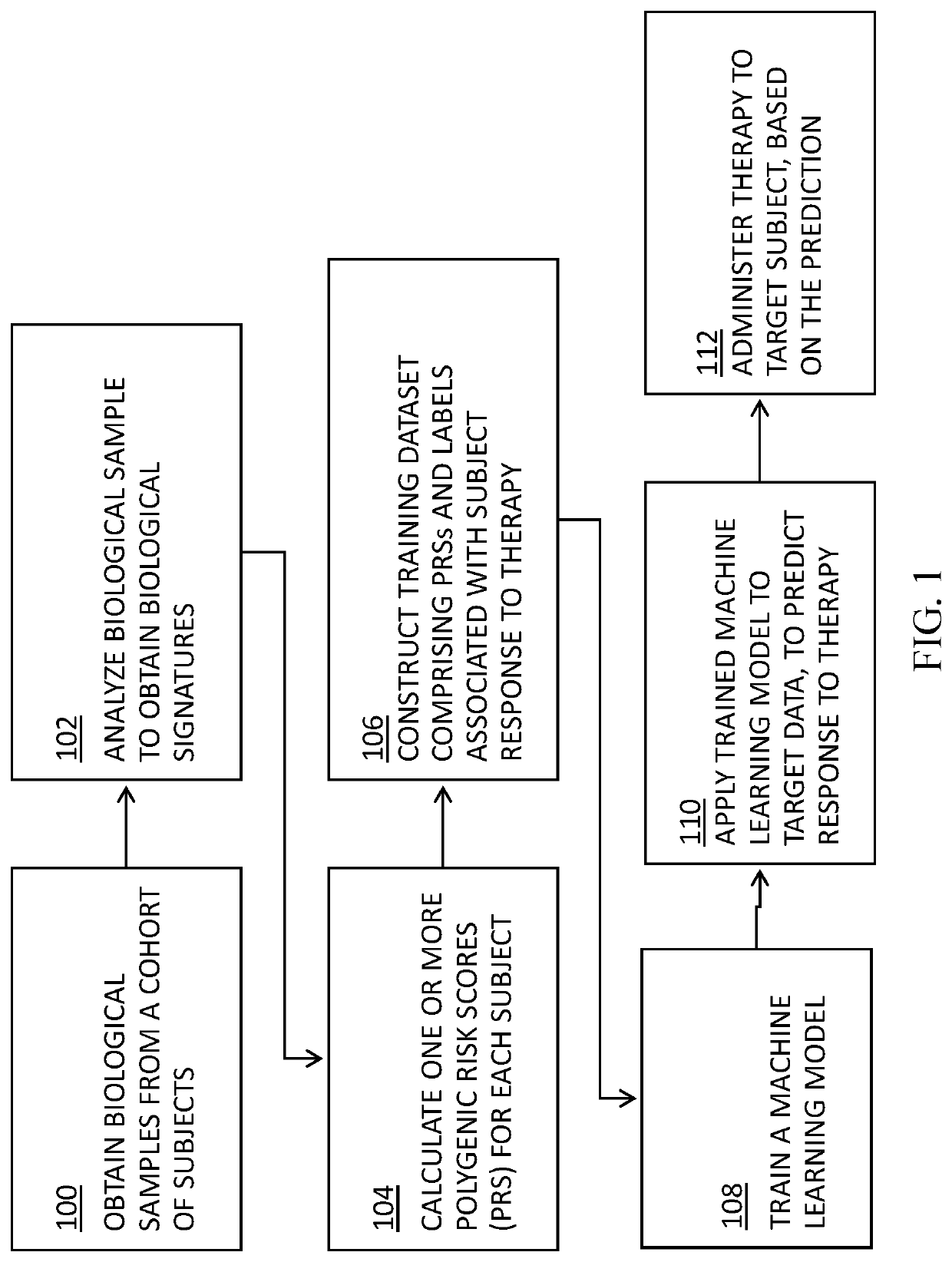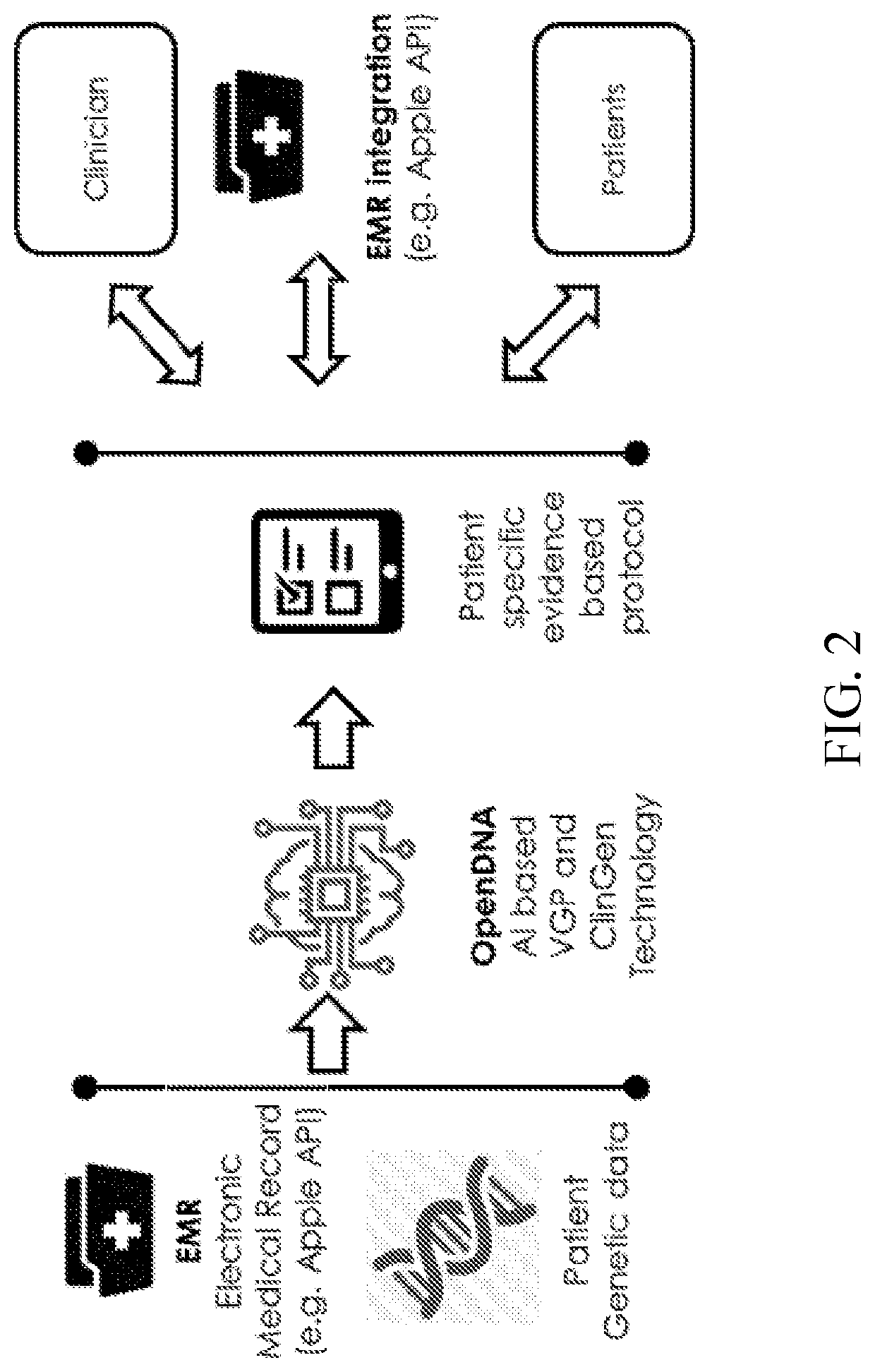Machine learning prediction of therapy response
a machine learning and prediction technology, applied in the field of machine learning, can solve the problems of genetically-informed therapy decisions in clinical practice today, poor bp control rate, other limitations of the related art, etc., and achieve the effects of lowering sbp, dbp, and blood glucose levels
- Summary
- Abstract
- Description
- Claims
- Application Information
AI Technical Summary
Benefits of technology
Problems solved by technology
Method used
Image
Examples
Embodiment Construction
[0023]Disclosed are a system, method, and computer program product which provide for a machine learning model configured to predict a response in a subject to prescribed therapy for a cardiovascular or cardiometabolic disease.
[0024]In some embodiments, the present disclosure provides for training a machine learning model using a training dataset comprising data regarding genetic predisposition in each of the cohort of subjects to develop cardiovascular or cardiometabolic disease and / or one or more traits associated with the cardiovascular or cardiometabolic disease. In some embodiments, each, or at least some, of the subjects in the cohort receive one or more treatments, e.g., one or more pharmacotherapies, for the specified cardiovascular or cardiometabolic disease.
[0025]In some embodiments, the genetic predisposition data may comprise a polygenic score (PS) associated with a genetic predisposition in a subject to develop, e.g., hypertension, including systolic blood pressure (SBP)...
PUM
 Login to View More
Login to View More Abstract
Description
Claims
Application Information
 Login to View More
Login to View More - R&D
- Intellectual Property
- Life Sciences
- Materials
- Tech Scout
- Unparalleled Data Quality
- Higher Quality Content
- 60% Fewer Hallucinations
Browse by: Latest US Patents, China's latest patents, Technical Efficacy Thesaurus, Application Domain, Technology Topic, Popular Technical Reports.
© 2025 PatSnap. All rights reserved.Legal|Privacy policy|Modern Slavery Act Transparency Statement|Sitemap|About US| Contact US: help@patsnap.com


